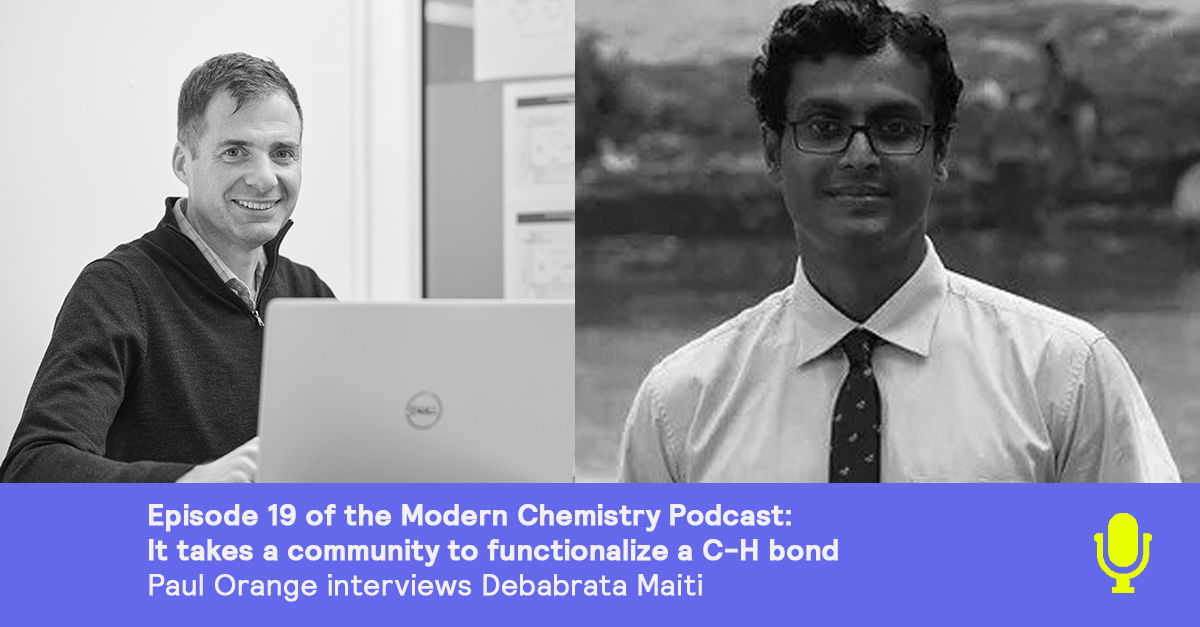
Episode 19 of the Modern Chemistry Podcast, features Prof. Debabrata Maiti. Prof. Maiti is a Professor in the Department of Chemistry, Indian Institute of Technology (IIT) Bombay, where he works on catalysis of functionalizing carbon-hydrogen bonds. You can find out more about his work at his group’s website.
Prior to his time at the IIT, Prof. Maiti has conducted research at Johns Hopkins University and the Massachusetts Institute of Technology (MIT), both in the USA.
Our theme music is “Wholesome” by Kevin MacLeod
Music from Film Music
License: CC BY
Connect with me (Paul) on LinkedIn.
Terms used during interview
If you’re not familiar with some of the terms used in this discussion – some key ones are described here for your reference:
-
- Bio-inorganic chemistry – the study of the role of metals in biological processes. This includes naturally occurring molecules and artificially introduced proteins.
- Metal center (active site) – the active metal in a larger molecule that reacts in (or catalyzes) a reaction
- Catalysis – increasing the rate of a reaction by introducing a substance to the reaction know as a catalyst. Catalysts are not consumed in the reaction.
- Functionalization of Carbon-Hydrogen bonds – converting a (Carbon-Hydrogen) C-H bond to a C-R bond. R represents a functional group that enables the final molecule to perform a specific reaction.
- Activation of Carbon-Hydrogen bonds – Reading (or breaking) the C-H bond so that the desired functional group can replace the Hydrogen.
- Enzyme – An organic catalyst, often found in nature and active in living cells. Enzymes are typically protein molecules.
- Organic molecule/organic substrate – A compound containing Carbon.
- Hydrogen bonding – An electrostatic force of interaction between a Hydrogen atom and another electronegative atom. The most common Hydrogen bonds occur between Hydrogen and either Nitrogen, Oxygen, or Fluorine.
- Reoxidize (oxidize) – during a reaction, a catalyst may accept electrons from the primary reactants or otherwise become reduced. Removing those electrons, or otherwise oxidizing the catalyst enables it to once more catalyze the reaction.
- Stoichiometric amount – Calculating the number of molecules (usually in moles) required for a given reaction.
- Photochemistry – Chemical reactions which are influenced by the presence or absence of light, often at specific wavelengths. Photochemistry is used to closely control reactions – i.e. the reaction will not take place if the correct light isn’t present.
- Motif – A specific part of a molecule – often found in a number of molecules.
Prof Maiti is contactable on LinkedIn.


